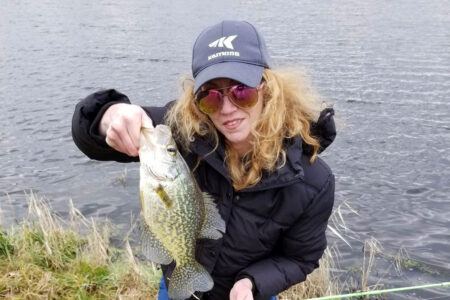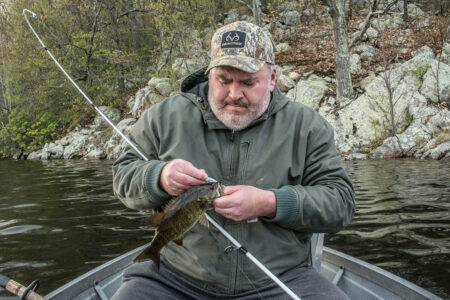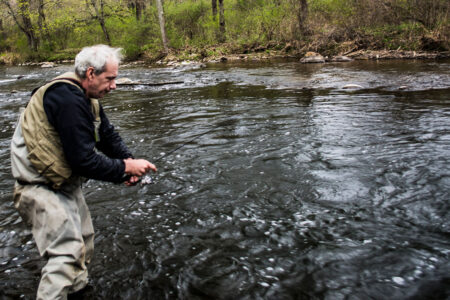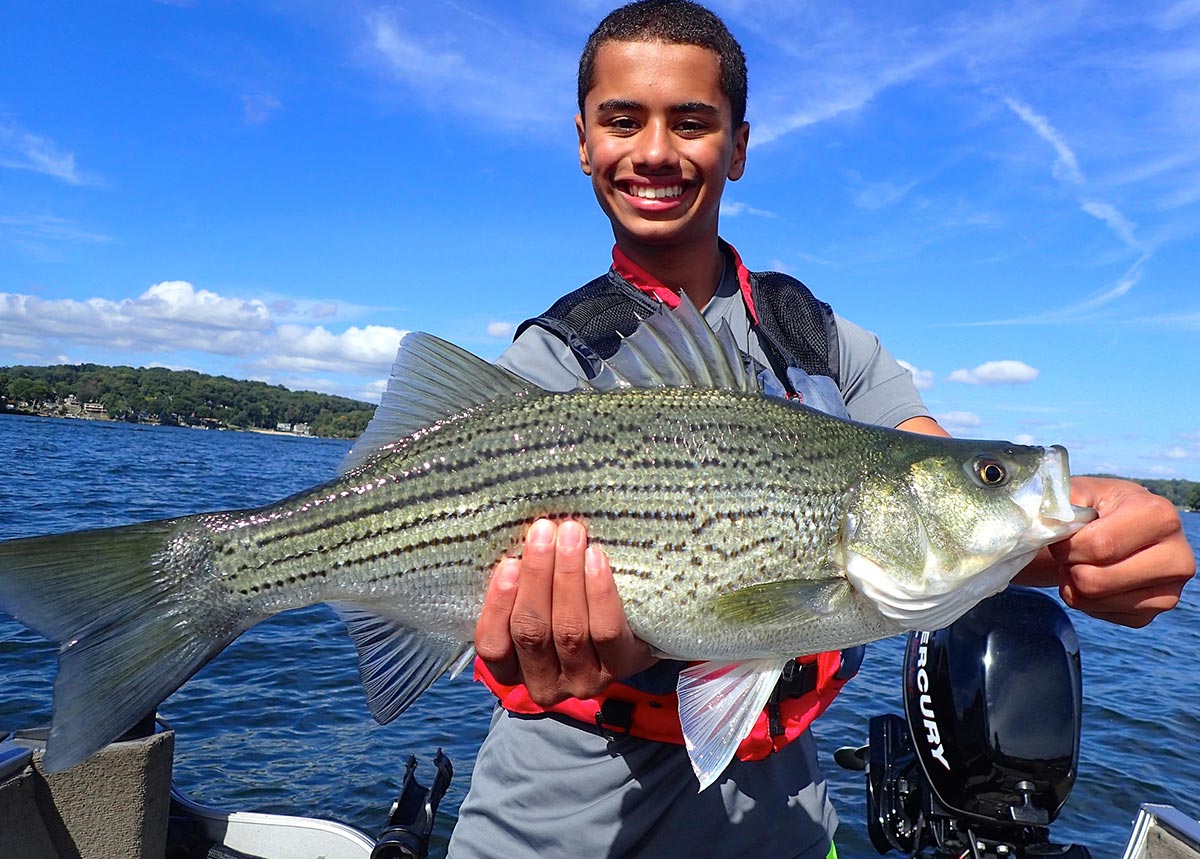
Those chasing linesiders along the Striper Coast may want to turn inland for a sweetwater shot this summer.
In 1984, the New Jersey Division of Fish Game and Wildlife began an aquatic experiment that has ultimately paid huge dividends for anglers in the Garden State anglers. Following the design of a successful program started two decades earlier in South Carolina, the division began to release a “hybrid” – a cross between the voracious white bass and the powerful striped bass into New Jersey waters. Known as “wipers” or “whipers” down south, these hybrid striped bass became known simply has hybrids in our local waters.
They’re also known to many as one of the hardest fighting, fastest growing species in freshwater. And soon after many multi-species fishermen have decided to give muskies a well-deserved break and as water temps reach into the 80s, it becomes an opportune time to pursue these gallant fighters.
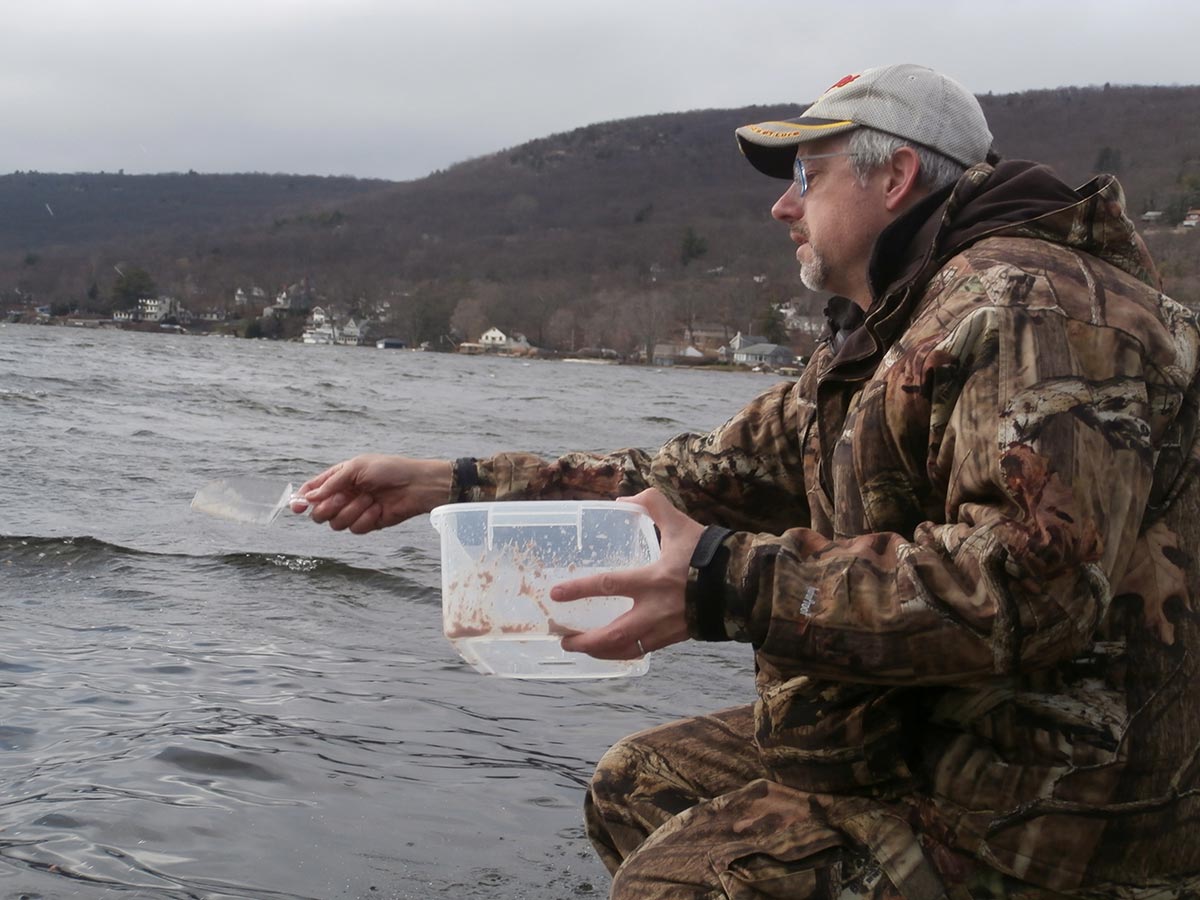
Bait ‘em Up
The tactics and techniques for encountering these worthy adversaries are limited only to the style of fishing you prefer. If you are a live bait fisherman, you only need to get a bucket full of shiners, with terminal tackle consisting of barrel swivels, 3/8- to 1/2-ounce egg sinkers, size #1 to 1/0 wide gap bait hooks and a few bobbers or floats. In terms of leader, 18 to 24 inches of Seaguar fluorocarbon line in 8- to 10-pound range will suffice.
Essentially, after locating suitable underwater structure in the 30- to 40-foot depth range, try and locate these schooling fish off lake points, roadways, boulders, ledges, or sunken trees. If you see big hooks on your fishfinder anchor up facing into the wind and set to deploy medium to medium/heavy 7- to 7-1/2-foot rods outfitted with wide spool spinning reels loaded with 10-pound Power Pro. Pass your main line through the sinker, attach the barrel swivel, and then tie your length of fluoro to the other end. Use a Palomar knot to attach your bait hook.
Bait up with a live shiner and lower it down through the thermocline to the bottom and reel up five or six cranks; set the rod in the holder and do the same with subsequent rods until you have four set out. Keep an eye on your fishfinder for approaching fish and adjust bait depth accordingly. If the surface water to 15 feet down, as an example, is in the 80s, your bait may die quickly. For that reason it’s wise to carry a dozen cans of cheap liver-flavored cat food, something to mix it in like Tupperware bowls or plastic scoopers. Also have a cooler of chicken liver on ice; chum the water with the cat food; slice the liver into 3/4- by 1-1/2-inch strips and repeat sequence as aforementioned for live baitfishing.
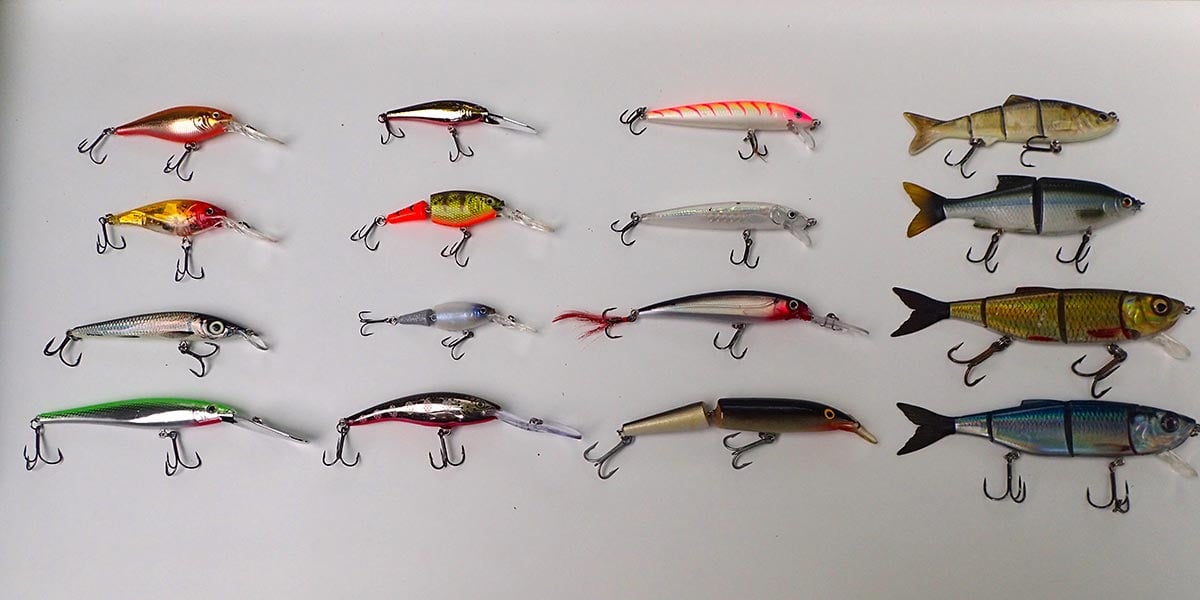
Be sure to loosen your drag a bit. I’ve seen it happen more than once, where anglers working together have had a heck of a time controlling the bedlam when all four rods go off as a school of hybrids comes through. Carry a suitable net and keep chumming cat food as long as they’re biting. You can also try leaving two rods down low with liver and two others with live bait above the thermocline with bobbers for top water feeders; just make certain to check bait frequently.
On the Troll
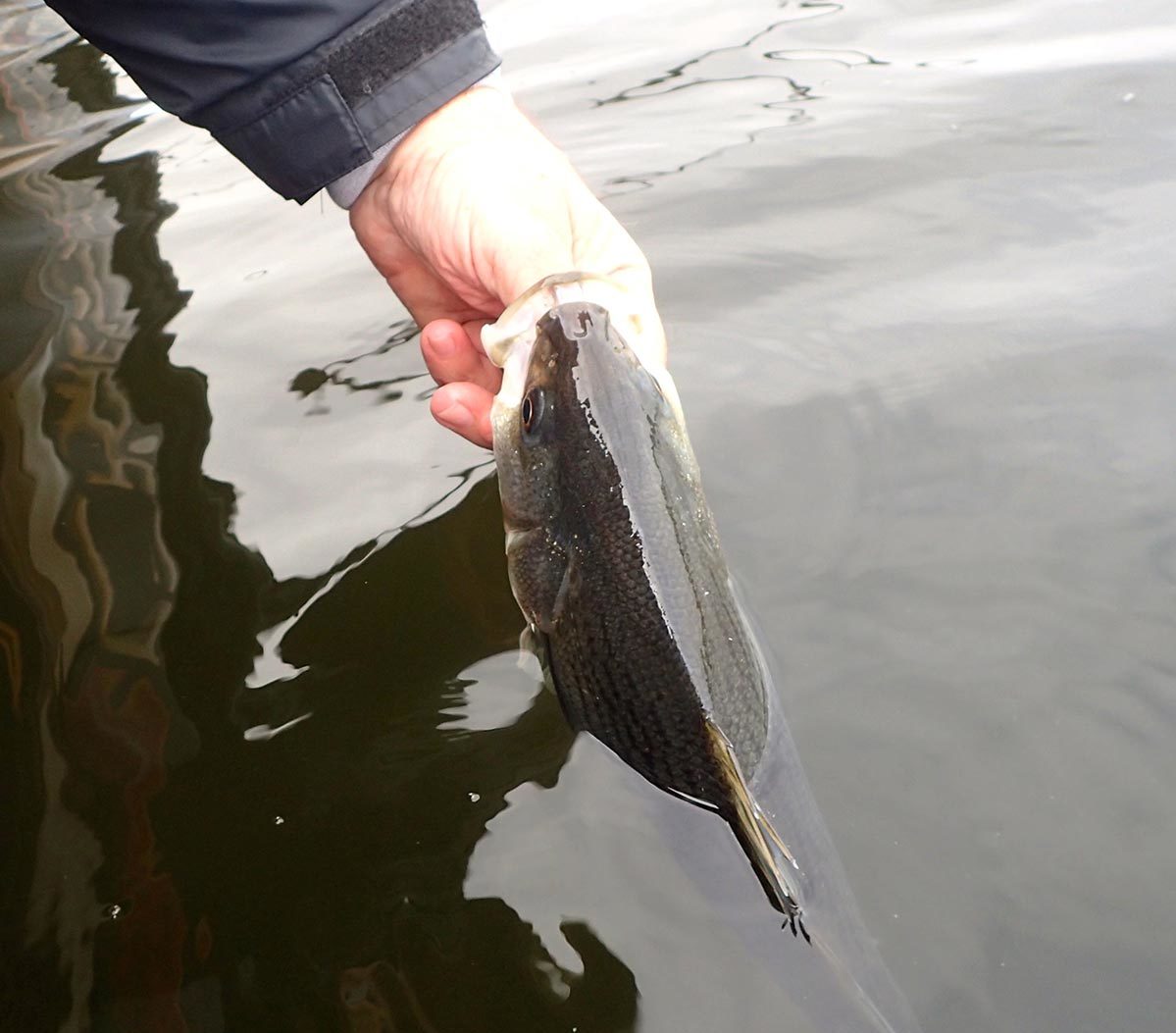
For those anglers who want a more “moving” experience, trolling is also effective. Get to the lake before sunrise, and after launching, listen for feeding fish. Loud smacking sounds denote a school of feeding broken linesiders. As one angler readies the equipment for trolling, another can make casts to the feeding sounds with a Black Zara Spook, Hula popper, Jitterbug or Rapala F-18. Most mornings you should be able to boat a quick one or two this way.
When ready to get down to serious trolling business for hybrids, put out two planer boards, and two flat lines out the back. Cabela’s 7-1/2-foot medium/medium heavy trolling bait casters with line counting reels are the right choice for open water trolling. Power Pro 10-pound braid is a good option for your main line, and we like to use a 15 feet of 8-pound Seaguar fluorocarbon leader attached to the main line with a small barrel swivel that fits between the reel guides.
Great lures for this technique are Berkley Flicker Shads, Berkley Flicker Minnows, Rapala Husky Jerks as well as Jointed Rapalas, Livingston Banana baits, and assorted spoons. I would add that Savage Gear makes some very realistic shad and herring imitations as well that are worth a look.
The New Jersey Division of Fish and Wildlife stocks Lake Hopatcong, Spruce Run Reservoir and Manasquan Reservoir every year with hybrid stripers from the Hackettstown Hatchery (They reported 42,451 fish were deposited in these waters in 2019.). According to the author, hybrids can also be found at Greenwood Lake, and a few have made their way into Monksville Reservoir as well.
.
While average hybrids may come in the 6- to 8-pound range, a 10-pounder is a realistic goal for anglers and provides unbelievable sport on light tackle. Twenty years ago Bill Schmidt claimed the state record of 16 pounds, 4 ounces caught in Culvers Lake.
Many baits come with Dive Curve charts, which tell you the right amount of line to lay out to present baits at the right depth. Try trolling these baits above the thermocline at about 1.7 to 2.5 knots. The forward action of the troll should drive hooks safely into the corner of the hybrid’s mouth, so be sure to keep adequate pressure on the fish to keep it buttoned up. Expect long surging runs, and as you work the fish towards the boat don’t be surprised when it makes another dramatic surge to the bottom, boatside. Keep your drag set a bit light, to give them room to run; don’t horse them as they will pop your line. Think of it as fighting a big smallie on performance enhancers. Believe me once you battle these great counter-punchers, you’ll become a hybrid fan.
After a long hard day of tending rods and changing baits, check your livewell and consider tossing a few lines out under lit bobbers for a little evening break; in other words, let these fish come up to you as the sun goes down. When those lips start smacking, it’s time to start whacking – you just may get that coveted 10-plus pounder as the moon breaks through the trees.
